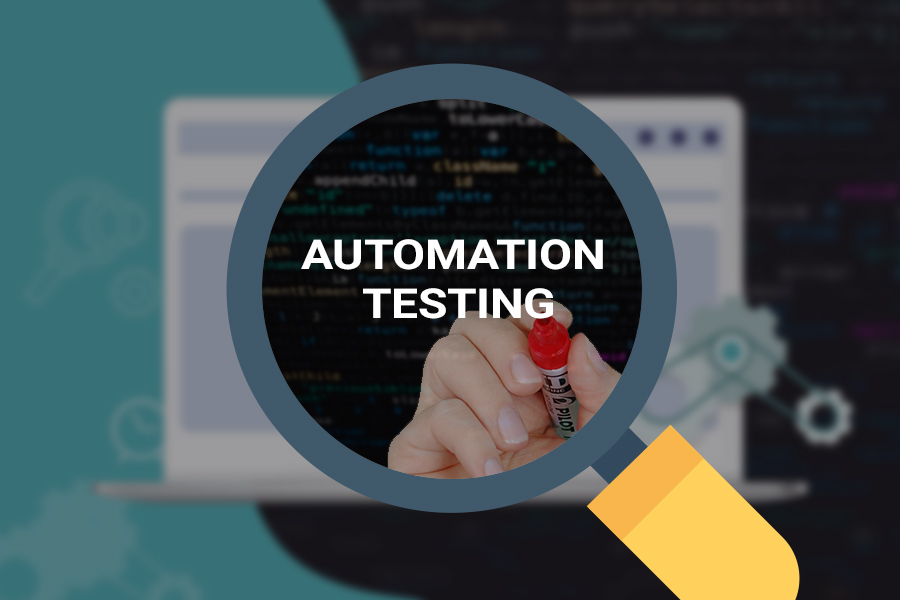The Ultimate Overview to Implementing Automation Testing Successfully
The Ultimate Overview to Implementing Automation Testing Successfully
Blog Article
Making Certain Success in Automation Evaluating: Trick Metrics, Challenges, and Solutions Every QA Group Need To Know
In the world of software high quality guarantee, the landscape of automation screening is ever-evolving, demanding a precise method to guarantee seamless operations. The journey to mastering automation screening is led with subtleties that call for an eager eye for surveillance, evaluation, and continual renovation. As the market drives ahead, the mission for optimal performance in automation screening continues to be a continuous pursuit, urging QA groups to outfit themselves with the expertise and strategies vital for victory.
Importance of Key Metrics
Recognizing the relevance of crucial metrics is essential for evaluating the performance and performance of automation testing procedures. Secret metrics act as measurable measures that give useful insights right into different aspects of the screening procedure, such as examination protection, examination execution time, defect thickness, and test case performance. By assessing these metrics, QA teams can identify bottlenecks, ineffectiveness, and areas for improvement within their automation screening framework.
One important facet of crucial metrics is their ability to track progression and check the general health and wellness of the screening process (automation testing). They make it possible for stakeholders to make informed choices based upon data-driven insights, which can cause more reliable testing methods and far better resource allotment. Furthermore, vital metrics can assist groups set sensible objectives, measure the success of automation efforts, and show the ROI of automation screening efforts

Usual Difficulties Dealt With
Obstacles commonly experienced in automation screening procedures can significantly affect the overall efficiency and performance of QA teams. Automation screening might not cover all aspects of testing, such as functionality and individual experience testing, which still need manual intervention. Getting over these challenges requires proper planning, tactical test case selection, durable upkeep procedures, adequate sources, and a clear understanding of the limitations of automation testing.
Efficient Solutions for Obstacles
To resolve the barriers run into in automation testing, implementing effective options is necessary for boosting the performance and productivity of QA groups. One essential solution is to buy durable training programs for QA teams to ensure they have the necessary abilities to efficiently utilize automation devices. Training can bridge expertise spaces, improve understanding of automation structures, and enhance scripting capabilities, inevitably resulting in more effective test production and execution.
One more important remedy is to establish clear interaction channels within the QA group and with other stakeholders, such as developers and task supervisors. Effective interaction helps in lining up expectations, sharing development updates, and promptly resolving problems or roadblocks that might occur throughout the automation testing process.

Monitoring and Evaluation Methods
Executing effective surveillance and analysis techniques is important for guaranteeing the success and efficiency of automation screening processes. By making use of tracking tools, QA groups can track the performance of test manuscripts, identify traffic jams, and identify areas for improvement. Real-time surveillance enables fast detection of concerns, allowing rapid feedback and resolution. Furthermore, examining test outcomes and metrics supplies important understandings into the quality of the software program being checked and the efficiency of the screening strategy.
One trick technique in tracking and evaluation is using control panels that settle appropriate metrics and KPIs in an aesthetically available layout. These control panels provide a thorough overview of test implementation standing, examination protection, defect patterns, and various other crucial details. On a regular basis reviewing and examining these control panels can assist QA groups make educated choices, prioritize tasks, and enhance screening efforts.
Moreover, implementing automated signals and notifications based on predefined thresholds can enhance proactive tracking and timely treatment. By establishing notifies for performance inconsistencies or examination failings, groups can address issues quickly and avoid them from intensifying. On the whole, monitoring and analysis this hyperlink techniques play an important role in guaranteeing the efficiency and success of automation testing campaigns.
Constant Renovation Strategies
Enhancing the efficacy of automation screening site web processes demands the constant refinement of approaches and techniques. Continuous renovation techniques are pivotal for QA groups to adjust to evolving innovations and supply high-quality software. One crucial method to enhancing automation screening processes is to conduct normal evaluations and retrospectives. By analyzing past testing cycles, teams can identify bottlenecks, inefficiencies, and locations for enhancement. Implementing comments loops and including lessons learned right into future screening frameworks can produce significant renovations over time.

Conclusion
In conclusion, it is essential for QA groups to comprehend the key metrics, obstacles, and remedies in automation testing to guarantee success. By very carefully keeping track of and analyzing data, implementing efficient services to typical challenges, and continually enhancing approaches, QA teams can maximize their testing procedures and provide high-grade software. Sticking to these methods will ultimately bring about extra efficient and efficient automation testing practices.
By assessing these metrics, QA groups can recognize bottlenecks, ineffectiveness, and areas for improvement within their automation testing structure.
Additionally, vital metrics can help teams established sensible goals, determine the success of automation efforts, and demonstrate the ROI of automation screening efforts.
Difficulties generally experienced in automation testing procedures visit this website can considerably impact the general performance and effectiveness of QA groups. Automation testing might not cover all aspects of testing, such as functionality and individual experience testing, which still need manual intervention.In final thought, it is vital for QA teams to recognize the key metrics, challenges, and solutions in automation testing to make certain success.
Report this page